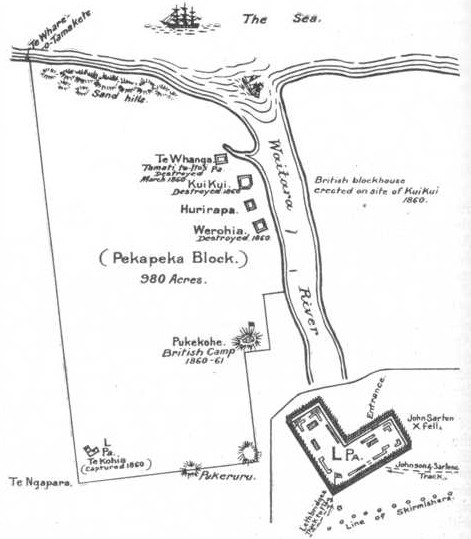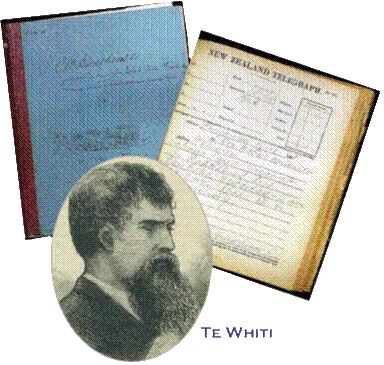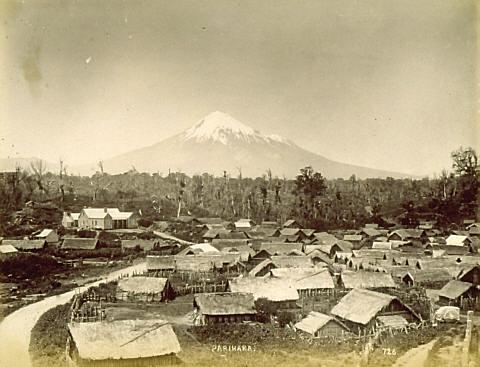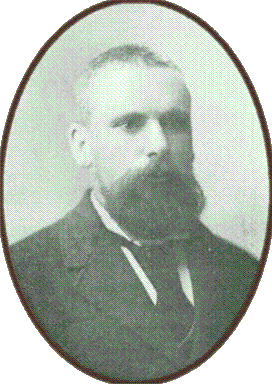|
Hidden Slide Menu on Left
Below, Hursthouse Page Index Charles Wilson Hursthouse
Charles Wilson Hursthouse, the eldest
son of John and Helen Hursthouse was born 26th July,
1841 in Norwich, England, and was only some 18 months old when he
landed in Wellington on the "Thomas Sparkes' with his parents on the 31st
January, 1843. The family moved north to New Plymouth, arriving at their
new home in April, 1843.
He was educated as a surveyor and
entered the Taranaki Survey Dept. Service on the 28th March, 1855 as
a cadet and during his 50 years service, his force of character and
influence with the Native Wilson Hursthouse meant he was
invariably selected by the authorities to carry on the difficult and
dangerous work of pioneer surveying and road-making in the face of Native
opposition. His cousin S Percy Smith, a surveyer also, wrote:
"Wilson was an able man of great ability and a charming companion
having his father's talent for yarning."
1858: S Percy Smith, cousin Wilson Hursthouse along with
F Murray, J McKellar and A Standish walked from New Plymouth overland to
Mokau, Taupo, Rotomahana, Rangitikei and north to Wanganui - his
reminiscences were later published.
In 1858 Wilson gained promotion as
assistant surveyor and clerk:

Src: Wikipedia - Map of the disputed
block at Waitara Feb 20. 1860; Wilson Husthouse was chosen
to go with Mr Robert Harris, Chief Commissioner of Native Affairs,
and Mr Octavius Carrington, Chief Surveyor to carry out the survey at
Waitara of a purchased
block of land, 600 acres (240 hectares) at the mouth of the Waitara
River. Māori disputed it's sale and
forcibly stopped the survey
work and took away the surveyors' chains. The British army based at
New Plymouth were moved to occupy the block and a proclamation of martial
law followed and the survey was completed under the protection by the
military.
The Militia Act in 1858 by Governor
Gore Brown provided for the formation of volunteer colonial units and
Wilson along with other Taranaki men responded to provide a garrison
force for defensive positions and guard communication networks.
Mar 3rd 1860: C. W. Hursthouse along
with privates from the Rifle Volunteers started from town to
Walker's farm, for the purpose of gathering peaches (Sunday was a day
when the natives generally retired to their pas). They found none at
Walker's farm so decided to gather them at Mr. Hursthouse's
orchard. They commenced picking but heard a shot fired at the end of the
orchard where two of their number were. First thoughts were it was
fired by one of the party, and called to know the cause, and received
a volley from a ditch immediately behind the trees, fired by about 30
natives, and severely wounded W. Smart in the back. The Volunteers ran for
cover through the gap by which they had entered, but a second volley fired
by the natives, killed Edward Messenger
Early in 1860 settlers moved into New
Plymouth for safety and 3500 troops poured in - the
town became transformed into a fortified garrison. By May 1860
Taranaki refugees - the wives and children were shipped to
Nelson and here, their numbers swelled to 1200 by Aug. 1860. In Oct.
1860 a settler wrote: "Little remains of the settlement of Taranaki
outside the 50 acre section to which the town is reduced"
The Taranaki Rifle Volunteers and Militia became the first colonial unit ever to take the field against an enemy. At the battle of Waireka on March 28 1860, C W Wilson and Sergeant Free had the honour of firing the first two shots. The troop was also at Mahoetahi, and at many minor engagements and skirmishes, finishing with the fight at Gilbert's farm, known as Allen's Hill, Oct, 1864.
1864-66 years were employed constructing roads around New Pymouth and surveying and allotting land to military settlers from Tapuae (near New Plymouth) to Patea. In 1866 CWH received a commission as ensign in No. 9 Company Military Settlers and in 1868 his commanding officer requested he take Second command of a company of Volunteer Militia Scouts for the protection of settlers by discontented Natives - for this work he was promoted to lieutenant;
Charles Wilson Hursthouse mar: 1st Jan 1868
to Ellen Humphries, 2nd daughter of Edward Larswell Humphries MD;
In Mar. 1871 Wilson was appointed to make a
preliminary survey for a railway line route from Whenuakura northwards,
passing Patea. and Hawera to Waingongoro. It was to be a coast railway,
running round by Cape Egnont. On completion the line was extended
southward from Whenuakura to Nukumaru towards Wanganui and followed
by a line laid out from Waitara and New Plymouth line, and
he superintended the latter part of its construction.
A large party of Maoris was employed in
1873-4, to construct the road.from near Sentry Hill through the
untouched forest to near where Stratford now is, so as to connect with the
southern end work. He surveyed boundaries for the purchase of
various blocks around the present Inglewood and Stratford.
In 1875 C W Hursthouse was appointed
resident engineer in the Public Works Department, responsible for the
construction of the railway line from Sentry Hill to
Stratford along the previously laid out line.
 Early
1880 he was appointed road surveyor in the Public Works Department for
the purpose of laying out and constructing the road from Stony River to
Opunake, passing Parihaka on the way, the Armed Constabulary doing most of
the navvying work. ( Puke Ariki holds six
volumes of telegrams referring to the building of a lighthouse near
Pungarehu, road construction to Parihaka and detail
of Maori reaction to Te Whiti's teachings) Early
1880 he was appointed road surveyor in the Public Works Department for
the purpose of laying out and constructing the road from Stony River to
Opunake, passing Parihaka on the way, the Armed Constabulary doing most of
the navvying work. ( Puke Ariki holds six
volumes of telegrams referring to the building of a lighthouse near
Pungarehu, road construction to Parihaka and detail
of Maori reaction to Te Whiti's teachings) The struggle as to the Crown rights led
to trouble which culminated in the taking of Te Whiti and Tohu as
prisoners. Several hundred Maoris were arrested and imprisoned
in various parts of the colony. Wilson had
known Te Whiti for some years prior to the outbreak
of the Maori War of 1860, so had some influence with that subsequently
famous Native chief and with his people. Mr Rolleston was Native
Minister conducted meetings held at Parihaka which
CWH attended and he sent full telegraphic reports of the
proceedings to the Government.
 FAMOUS INCIDENT: Mr Hursthouse was specially
selected to go with, Captain Knowies, A D C. to Governor Gordon,
to present a letter from his Excellency to Te Whiti. In that letter
Te Whiti was informed that his Excellencv was anxious to see the trouble
of the Native people justly settled and that he had heard that Te
Whiti was anxious to him on the subject. Also, that the Governor
would be glad to see Te Whiti and hear what he had to say, at
Welliington or, if Te Whiti thought Wellington too far, the Governor
would be soon visiting New Plymouth, and he would then go on by
inland road to Hawera, and that Te Whiti could see him at either
place, or at some place between. It was when the A.D.C. was
endeavouring to discuss the letter with Te Whiti, through Mr Hursthouse as
interpretor that Te Witi used the celebrated metaphor, "The potato is cooked" — meaning that the case
had gone too far to be remedied. At the request of the A.D.C,, Te Whiti
elucidated the parable by saying: "If the Governor will plant a cooked
potato, and make it grow, then can he settle
 our
difficulties!" our
difficulties!" Hursthouse was present at all the subsequent proceedings
at Parihaka and was unable to attend to the road-making— he was the
only interpreter that Te Whiti would reply to on the day of his
arrest. The Parihaka’s leaders Te Whiti o Rongomai and Tohu
Kakahi were jailed without trial at Addington
Prison, Christchurch. For his services on this occasion Wilson was promoted to be a
captain to the New Zealand militia, an honourable position, but carrying
with it no emoluments.
|